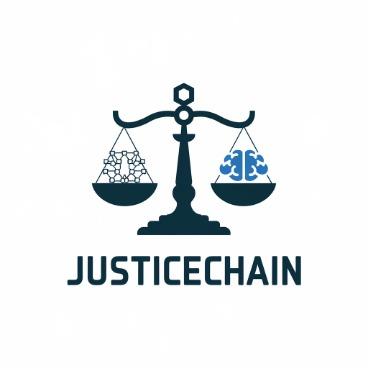JusticeChain
JusticeChain : Where Web4 meets Justice
Created on 2nd December 2024
•
JusticeChain
JusticeChain : Where Web4 meets Justice
The problem JusticeChain solves
🎯 What JusticeChain Solves
👨⚖️ For Legal Professionals
- Practice & Training: Simulate court proceedings with AI opponents to sharpen legal arguments
- Case Management: Track and manage cases with blockchain-secured documentation
- Evidence Handling: Submit and verify evidence with automated authenticity checks
- Virtual Courts: Conduct proceedings remotely with secure video streaming
- AI Assistance: Get real-time legal research and precedent suggestions
🤝 For Clients
- Affordable Justice: Access legal services without excessive fees
- Transparency: Track case progress and evidence in real-time
- Documentation: Secure, immutable record of all proceedings
- Accessibility: Participate in legal proceedings from anywhere
💼 For Law Firms
- Training Platform: Train junior lawyers using AI simulations
- Document Management: Secure storage and verification of legal documents
- Case Analysis: AI-powered insights and case outcome predictions
- Client Interface: Provide transparent case tracking to clients
- Evidence Management: Secure chain of custody for digital evidence
🏛️ For Courts
- Digital Transformation: Move from paper to blockchain-based systems
- Case Processing: Automated verification and processing
- Evidence Validation: AI-powered evidence authenticity checks
- Record Keeping: Immutable, easily accessible case records
- Virtual Hearings: Secure, efficient remote proceedings
🌐 For Global Legal Community
- Standardization: Common platform for cross-border cases
- Knowledge Sharing: AI-powered legal research across jurisdictions
- Collaboration: Secure environment for international legal teams
- Innovation: Bridge between traditional law and Web4 technology
- Accessibility: Break down geographical barriers to justice
Challenges we ran into
🎯 Challenges We Ran Into
🤖 AI Content Verification System
- Challenge: Needed to verify legal document authenticity and cross-reference evidence
- Problem: AI would sometimes lose context between different pieces of evidence
- Solution:
# Implemented a content verification system using file-based context os.makedirs('content-verification', exist_ok=True) file_path = os.path.join('content-verification', 'case.txt') with open(file_path, 'w', encoding='utf-8') as f: f.write(case_data.description) # For each piece of evidence for file in evidence_data.evidences: reference_file_path = os.path.join('content-verification/references', f"{file.original_name.split('.')[0]}.txt") with open(reference_file_path, 'w', encoding='utf-8') as f: f.write(file.description)
📝 Real-time PDF Generation
- Challenge: Needed to generate court documents in real-time as conversations progressed
- Problem: PDF merging would sometimes corrupt files during concurrent updates
- Solution:
def append_to_case_pdf(case_id: str, conversation: LawyerContext): try: # Create temporary PDF for new content temp_pdf = f'case_reports/temp_{case_id}.pdf' doc = SimpleDocTemplate(temp_pdf, pagesize=letter) # Merge with existing PDF using PyPDF2 merger = PdfMerger() if os.path.exists(pdf_filename): merger.append(PdfReader(open(pdf_filename, 'rb'))) merger.append(PdfReader(open(temp_pdf, 'rb')))
🔄 WebSocket Implementation Hurdles
- Initial Challenge: Implementing real-time bidirectional communication between human lawyers and AI agents proved complex
- Problem: WebSocket connections would drop during long AI processing times
- Outcome: Stable connections maintained even during extended AI processing
Tracks Applied (10)
Social-Fi Track
FanTV
Common Pool
Sui
AI Agents
Bullieverse
Consumer Track
Base
Autonomous AI Agents in Blockchain
Nethermind
Build on Okto
okto
Write on Okto
okto
Improve Okto documentation or any Okto SDK
okto
Write About Unfold
okto
Build On-Chain AI Agents
CAPX
Cheer Project
Cheering for a project means supporting a project you like with as little as 0.0025 ETH. Right now, you can Cheer using ETH on Arbitrum, Optimism and Base.
